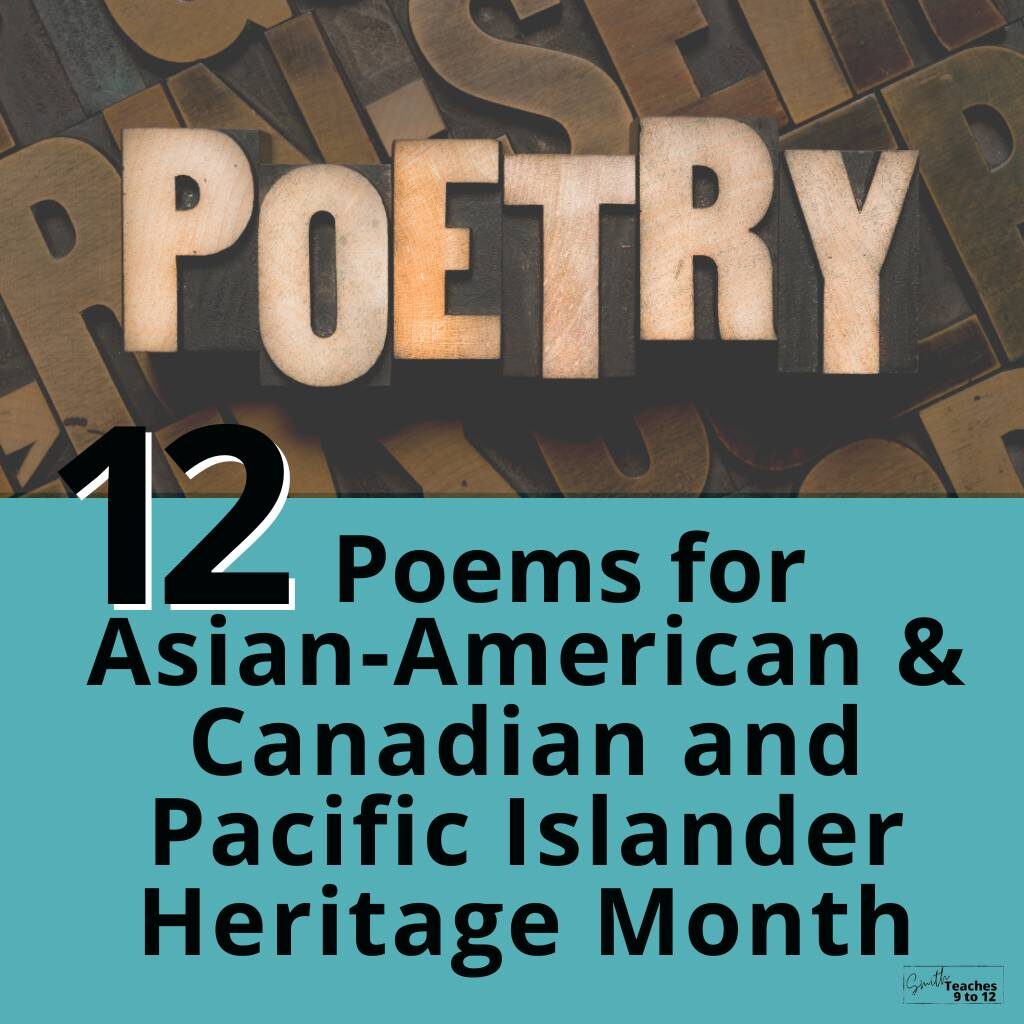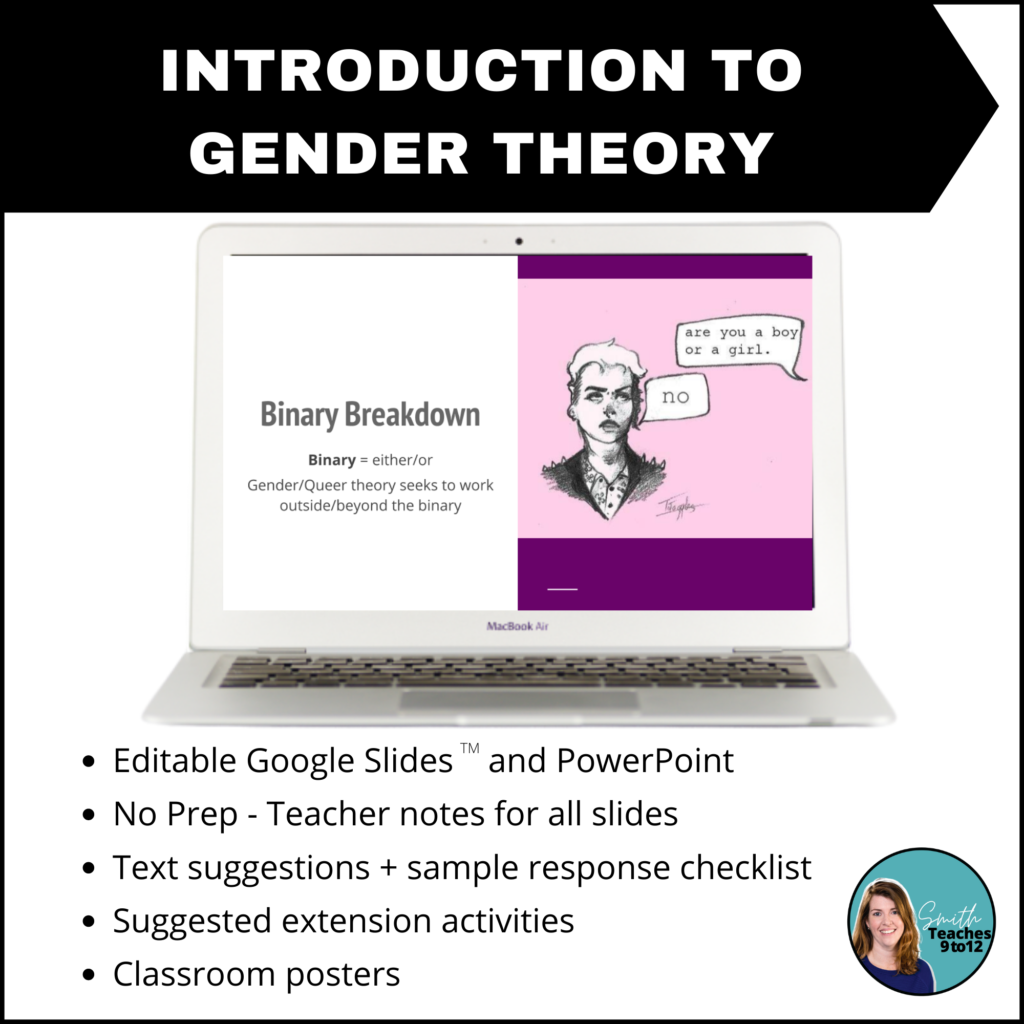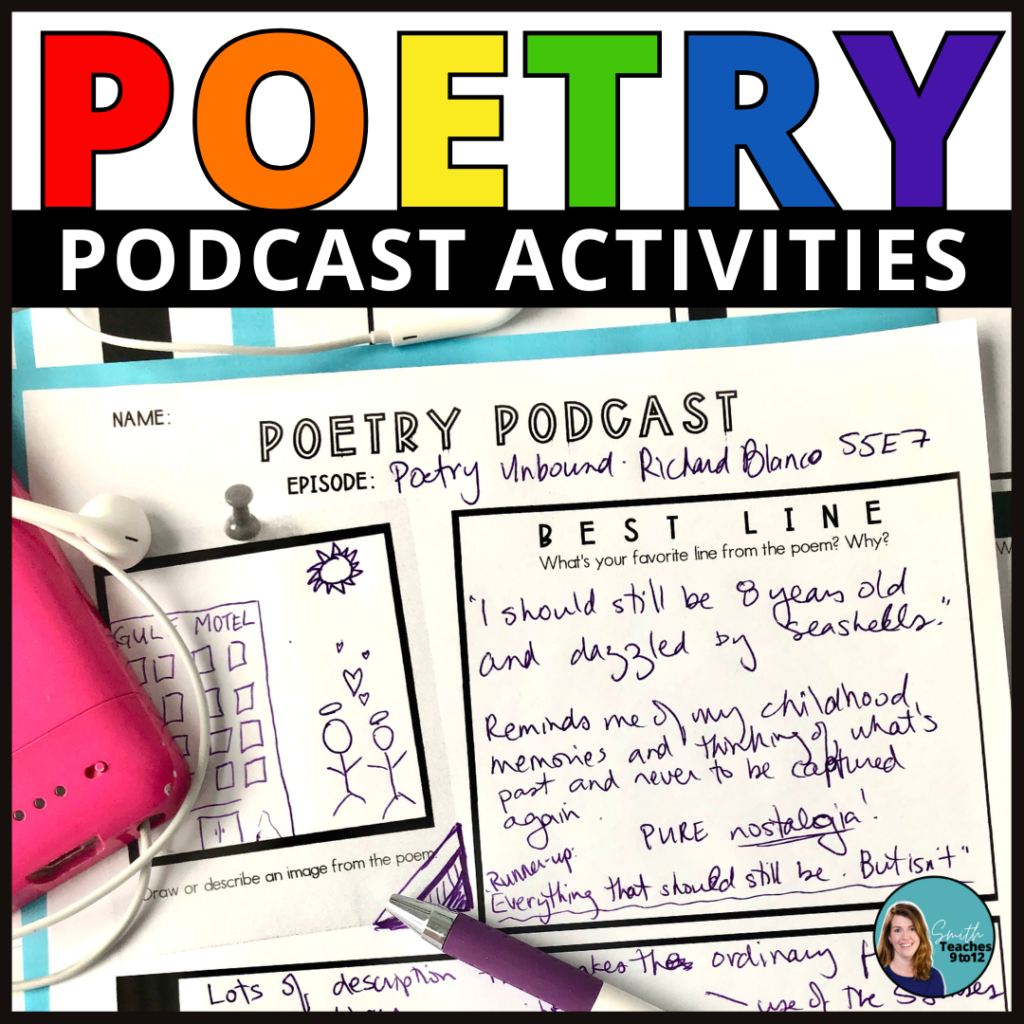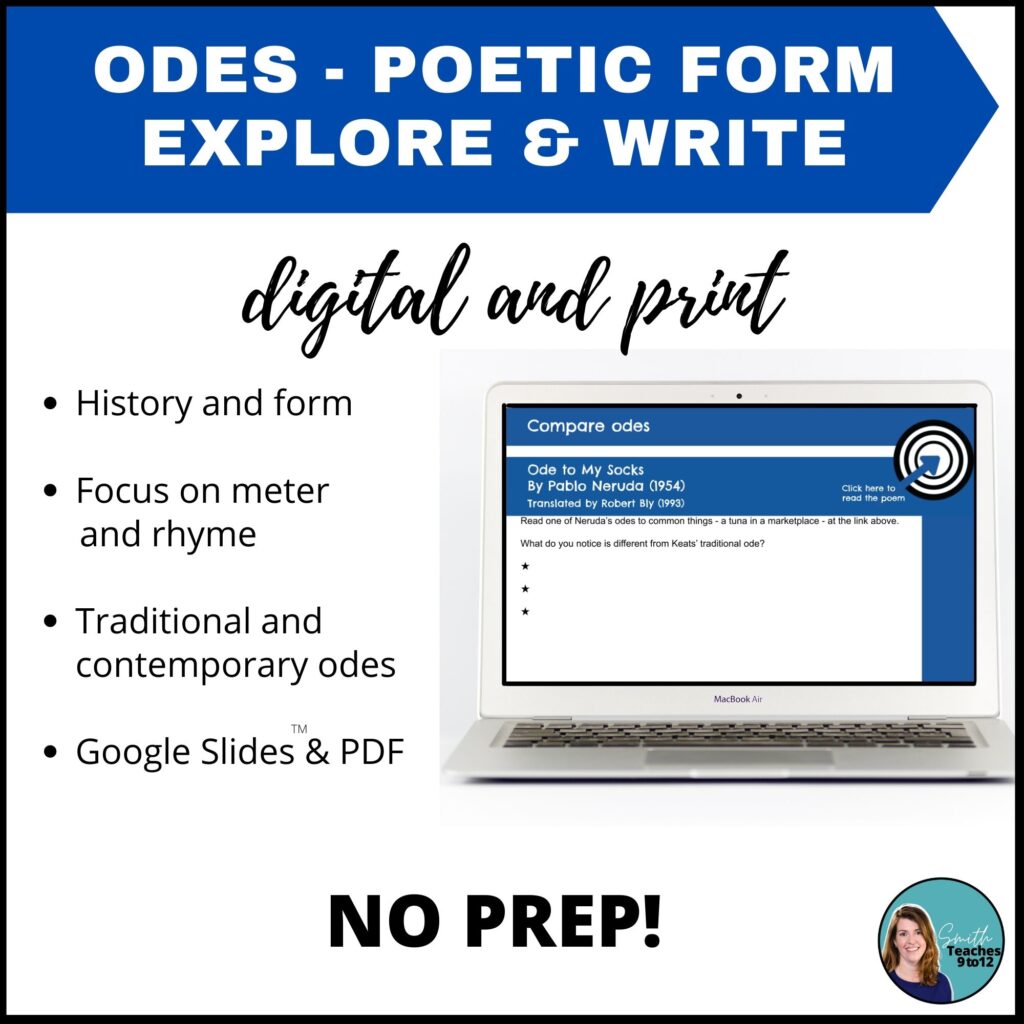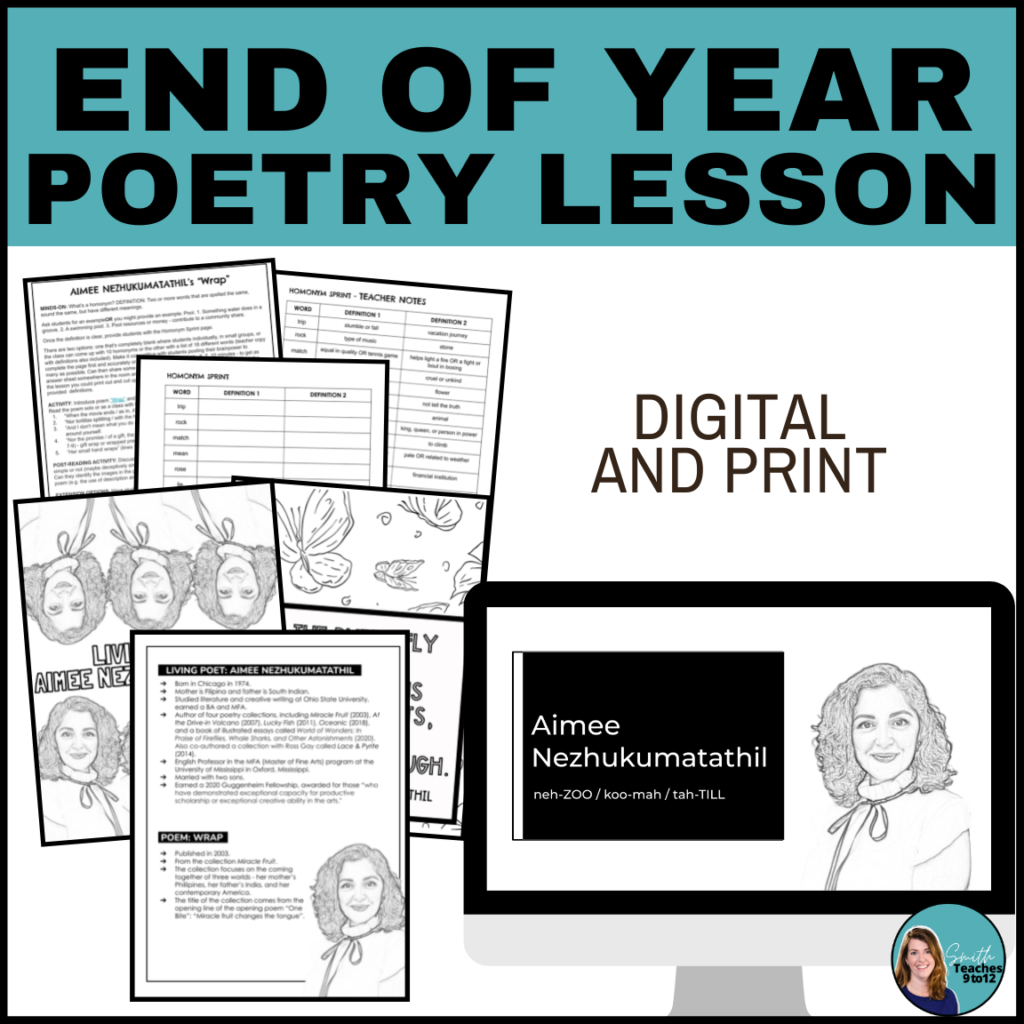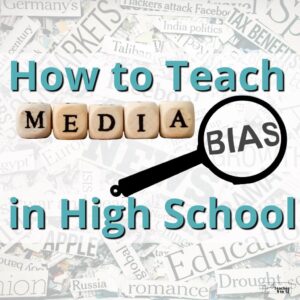Sharing is caring!
May is Asian-American and Pacific Islander (AAPI) Heritage Month in the US as well as Asian Heritage Month in Canada. The theme of the month in Canada is “Continuing a legacy of greatness” and these 12 poems for AAPI Heritage Month really do showcase a legacy of greatness. The poets, their forms, the subjects all contribute to knowing and exploring more about AAPI culture and heritage.
So, in an ongoing effort to support the inclusion of more poetry into English lessons, here are 12 poems for AAPI Heritage Month and even more activity ideas for your high school English classroom this May (and beyond!).

Poems by Rupi Kaur
View her Instagram feed here with hundreds of poems
Watch her performance of timeless or vacation
Rupi Kaur is one of those poets that high school students adore. They find her pop sensibility, her honest language, and the confessional nature of her poems so enticing! However, there is a lot – A LOT – of criticism of Kaur’s brand of insta-poetry.
Here’s a chance to read her poetry and then tap into the controversy. Read her work and then explore the critiques of her work in this Guardian article from 2017 or this CBC article from 2020 after Kaur was named Writer of the Decade by US-based magazine, The New Republic. After examining these articles, set up a debate in class with students taking on different sides to the controversy. The goal is not to decide whether Kaur is deserving of criticism or not but to get students practicing skills and also realizing that poetry can expand beyond just the page!

Another option is to explore Kaur’s work as an Instagram poet (instapoet) with this nonfiction article and poetry analysis activity. It’s great as a year-end option to engage students in some short reading and poetry activities.

How to Be Happy in 101 Days by Tishani Doshi
This poem is a figurative list of things to do to be happy and the list, since it is a poem, incorporates much imagery.
To make this into a longer activity that has ties to SEL or could be used as part of your end of year reflective moments in class, start by reading the poem as a class. Break it down to see all of the images used. How does the poet create them? What’s the ‘format’ being used? From there, students create a list of things that make them happy and include rich descriptions too.

Anna May Wong on Silent Films by Sally Wen Mao
This poem focuses on Anna May Wong, the first Asian American movie star who starred in more than 60 films from the 1920s through to the 1960s.
Tie this poem to a more in-depth examination of pop culture by watching this short (11 minutes) documentary episode from PBS about Anna May Wong’s life and career in Hollywood.
Here are a few post-viewing ideas for students to do:
- create a biographical sketch based on the documentary and compare it to the poem.
- write a poem about another movie star – a contemporary star or a lesser known one that they research. Check out this list from History.com about 10 Asian American Actors from Hollywood’s Golden Age or this wiki entry about Asian Americans in Arts and Entertainment for inspiration.
- discuss the revelations of racism in the film and explore how this continues to exist in films to date (the inclusion of Jenna Ushkowitz in the doc is a good bridge to this discussion).
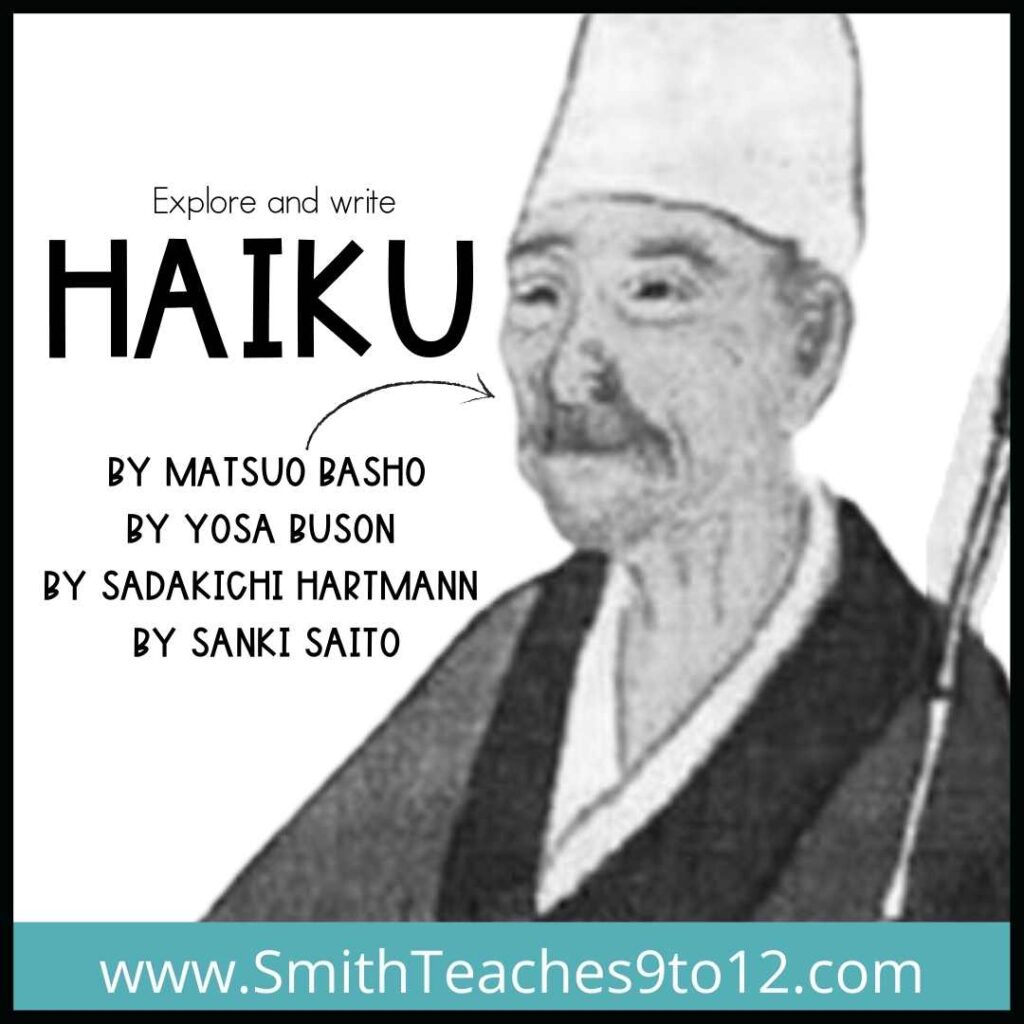
Haiku by Matsuo Basho or Yosa Buson or Sadakichi Hartmann or Sanki Saito
The 5-7-5 structure of haiku is quite accessible for students so to accompany this exploration of haiku, have students write their own.
As a class brainstorm some options for topics then provide some sticky notes to students and have them write a series of haiku using the different topics.
For a ready-made independent activity, you could use this digital or printable activity to support students’ creative process.
Another option is a more collaborative approach with some movement. Same as in the first option, brainstorm topics or titles and then place a selection of these at the top of a bunch of chart paper. Hang those around the room and have students circulate to add their own poems or simply to add a line. In this way students must make sure to follow the 5-7-5 approach. So if there’s a line of 5, they’re responsible for a line of 7 next. Once the three lines are complete they can add more lines to make it a tanka, which is the addition of two more lines each with 7 syllables. Or the next student can simply start another new haiku using the same topic/title to build on or to contrast with the last poem.
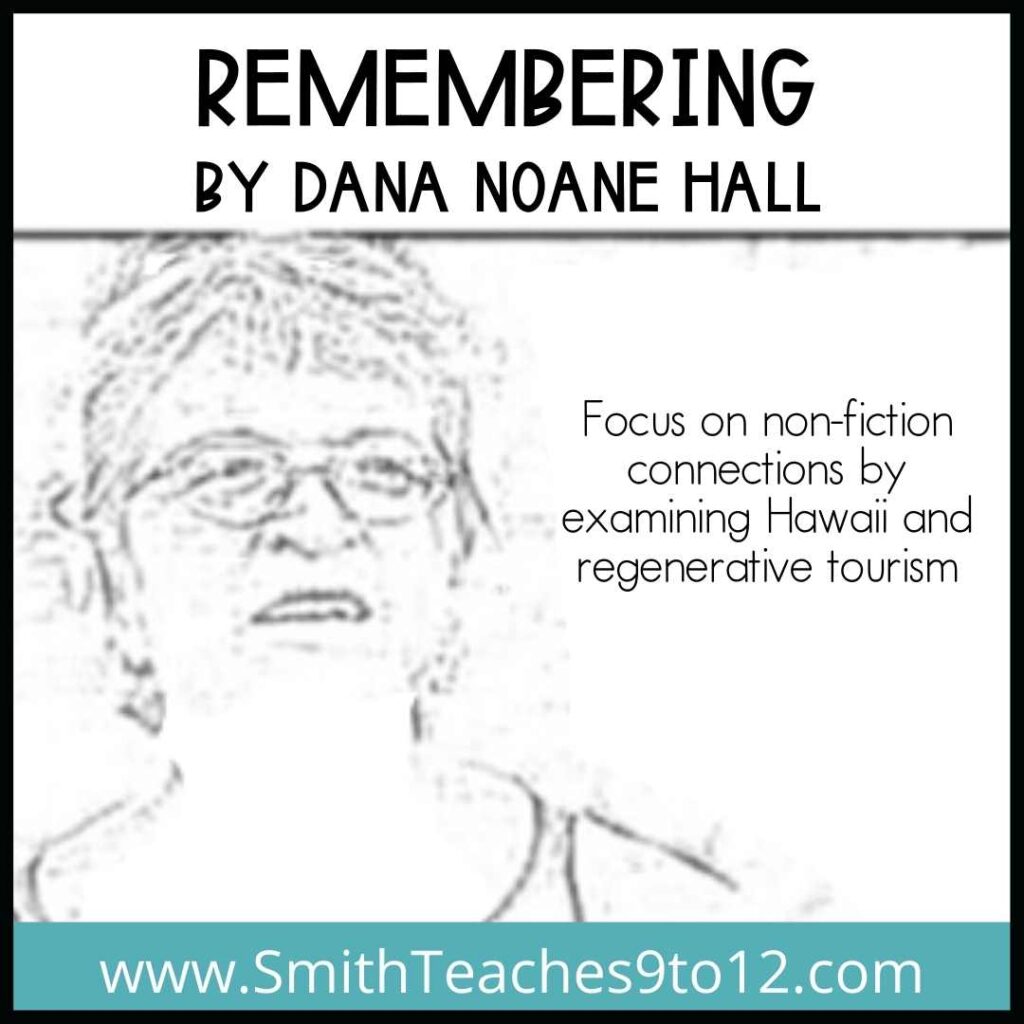
Remembering by Dana Noane Hall
Read or listen to the poem here
This poem about the disappearance of historical and cultural places and meaning in Hawaii works for a wider examination of colonialism and tourism.
After reading the poem and seeking out some background information about what is unfamiliar in the poem students can read this nonfiction article about overcrowding and tourism or this one with a focus on regenerative tourism (it also includes audio/video coverage of the issue). This could lead to some compare and contrast activities to develop those skills or a wider discussion related to tourism, environmentalism, and even the role of arts, such as poetry, in such action.

I Invite My Parents to A Dinner Party by Chen Chen
One idea for this poem is to create a character sketch of the four people in the poem – the speaker, his parents, as well as his boyfriend. Use the descriptions provided by the poet to explain what is known about each person; this would develop students’ inference skills too since they’ll have to read between the lines for some of the elements. Use STEAL (says, thinks, effect on others, actions, looks) in a graphic organizer as a way to scaffold the close reading.
With senior students this poem is a strong addition to an exploration of gender and sexuality. You might use this introduction to gender theory as the backbone to the exploration of the poem. The presentation features student-friendly content and guiding questions that will provide students the scaffolding needed to apply this literary lens.
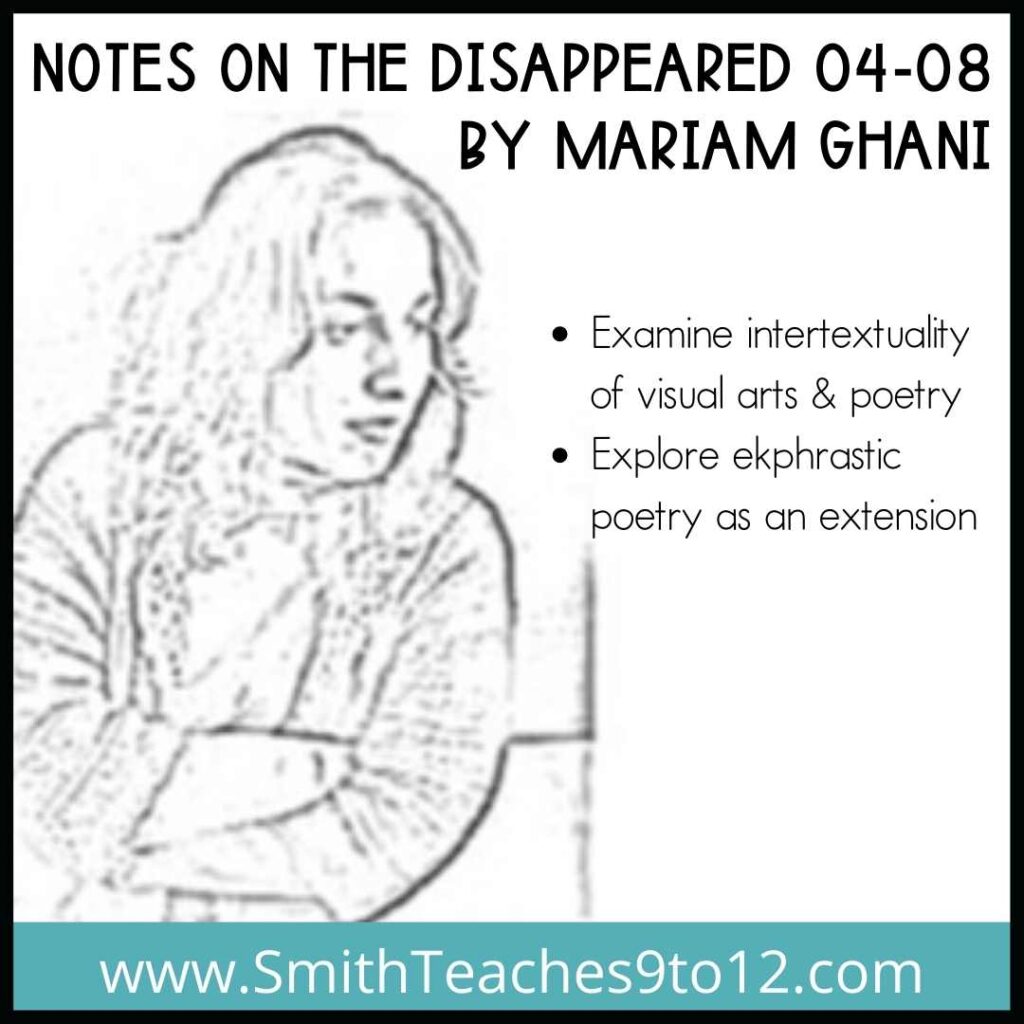
Notes on the Disappeared 04-08 by Mariam Ghani
This poem and art installation index by Afghani-American poet Mariam Ghani can be explored on her website. It is a fascinating exploration and deep dive into the commingling of poetry with other artistic forms.
Another option is to pair the poem with The Kite Runner by Khaled Hosseini (or to accompany a viewing of the film, whether you’re reading the novel or not). Examining the immigrant experience, the portrayal of the political elements, as well as Amir’s return to Afghanistan would make for interesting intertextual analysis.
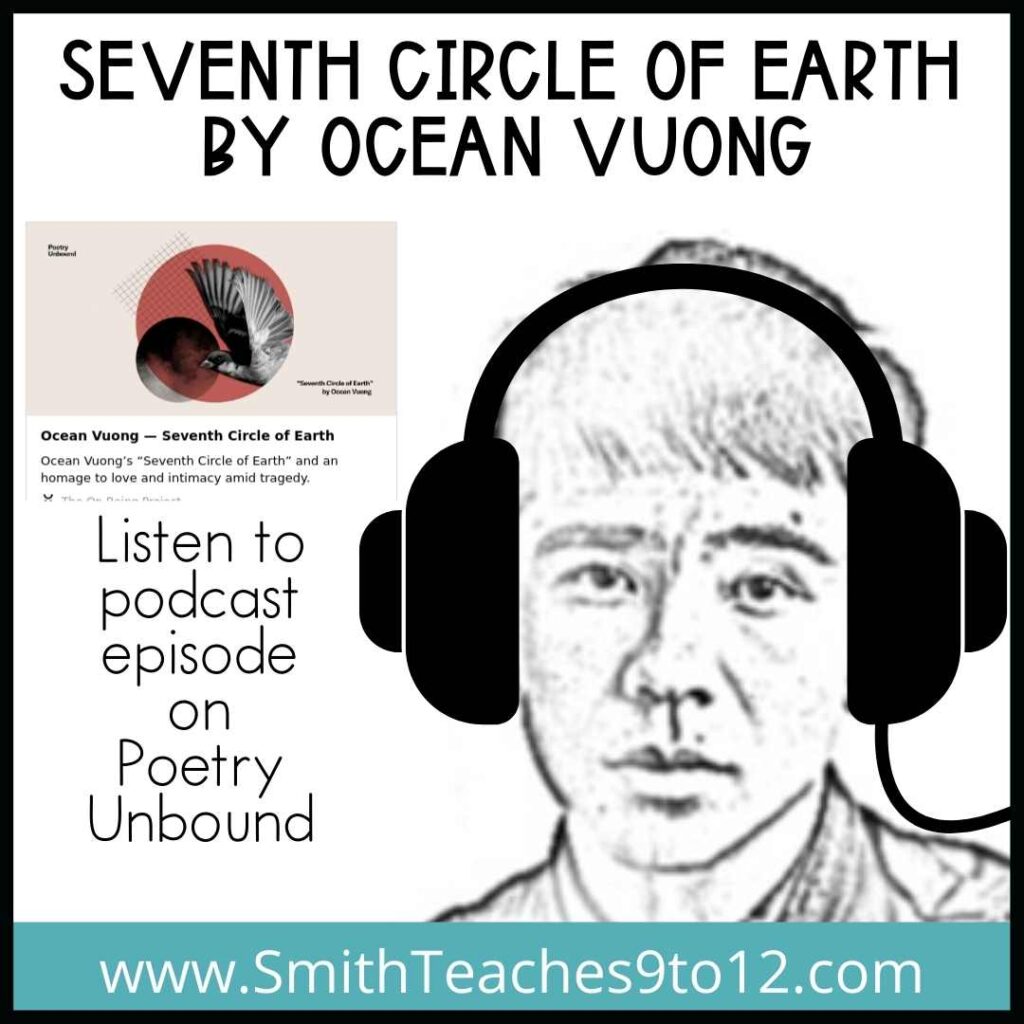
Seventh Circle of Earth by Ocean Vuong
You might use this poem in its written form – it’s quite remarkable in that it’s presented as a blank page with random numbers to correspond to footnotes, which is where – in the footnotes – the poem appears. Using the podcast reading and short discussion of the poem from Poetry Unbound would make clear the layered meanings of both content and form.
Use these podcast activities for pre-, during, and post-listening activities
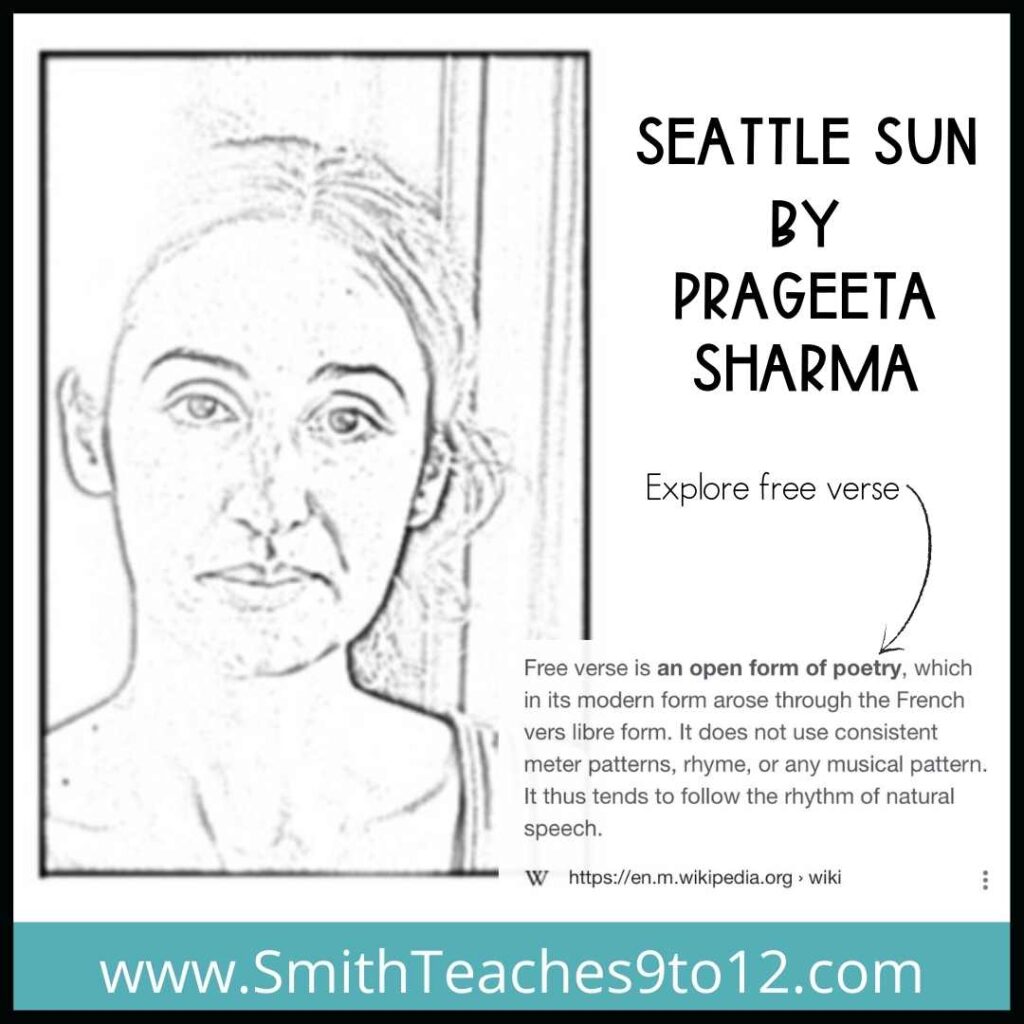
Seattle Sun by Prageeta Sharma
The poem is written in free verse, something students may not be familiar with at all. Use this article that explains the differences between blank verse and free verse then have students write their own free verse poem. This new poem could be inspired by the sun in whatever city you’re in, in that way mimicking the original poem, or they might write based on any text – fiction or non-fiction – currently being read in class; the possibilities are endless here!

Ode to Chinese Superstitions, Haircuts, and Being a Girl by Dorothy Chan
This poem with all that the name implies boils down to foreheads, but it’s also so much more than that – family dynamics, cultural exploration, family dynamics, and self-confidence! For this one you could:
- read and compare it to “Fish Cheeks” by Amy Tan
- add in some background information about superstitions by watching “Where do superstitions come from?” by Stuart Vyse on TED Ed. It’s five minutes long and could encourage discussion of superstitions in the poem and beyond. You could also assign a series of superstitions and have students explore their meanings and potential origins – a mini-research project.
- have students write their own odes to something that is outside of the realm of the traditional, like Chan has done in her poem.
If you want to save time, here’s a ready-made lesson for exploring and writing odes.
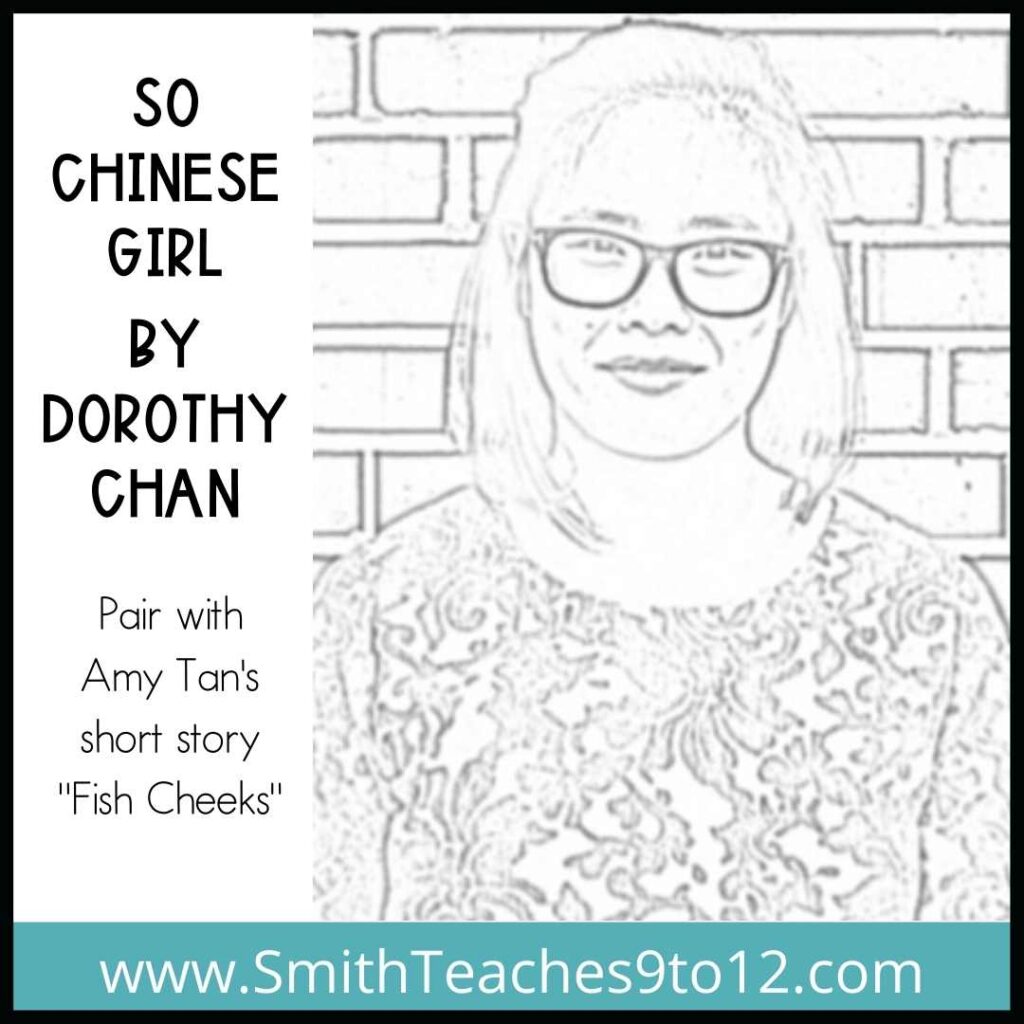
So Chinese Girl by Dorothy Chan
Because I also love Dorothy Chan so much, here’s another of her poems! This one focuses on food and the creation of identity and memories. It’s also a great pairing with “Fish Cheeks” by Amy Tan. The poem’s focus could also be inspiration for a free write – in poetic form or not – for students to tie their memories of food to their identity or to explore the foods of different cultures and to write about them.
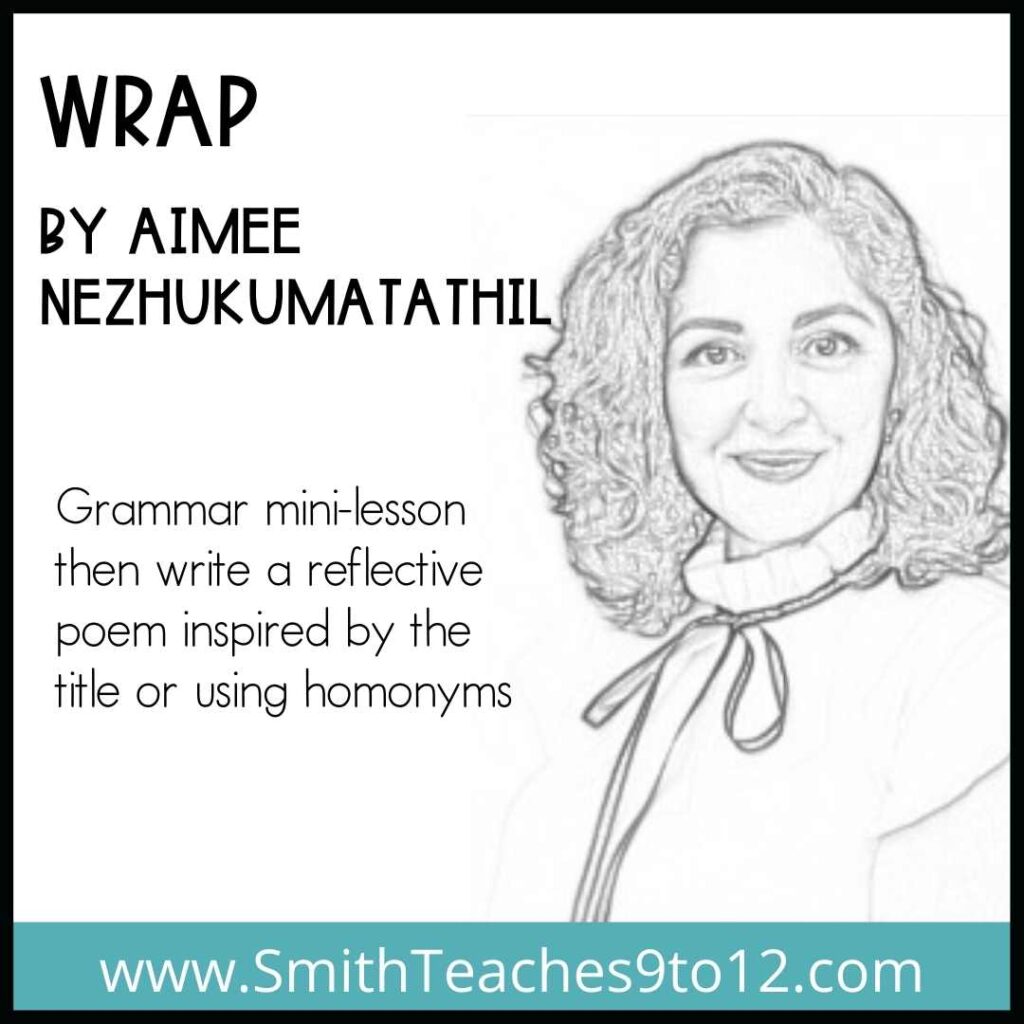
Wrap by Aimee Nezhukumatathil
I adore this poem for its use of homonyms. The word play in using ‘wrap’ in a variety of ways and in such strong, but simple imagery is really quite wonderful. For this one you could explore homonyms – a grammar lesson through poetry – and then have students use their own homonyms to write a new poem.
A homonym in case your grammar is rusty like mine, is a word that is spelled and sounds the same but has different meanings. Some of my favorite homonyms include trip (to stumble or to vacation), iron (mineral or household chore to get out wrinkles), match (equal in quality, to pair up, a tennis or soccer game, or the item to light a fire), bright (to be smart or clever or something is illuminated), or even fair (following rules, exhibition event with rides/games, pale skin, description of weather) .
Check out the ready-made lesson that walks through the poem, the grammar mini-lesson – with 44 suggested homonyms as well as a gamified activity, plus extension activities to write a poem inspired by Nezhukumatathil’s.
I hope these 12 poems and the variety of activities provide some options for you in your high school English classroom this May in order to honor the AAPI and Asian Heritage Month based through the greatness of poetry!
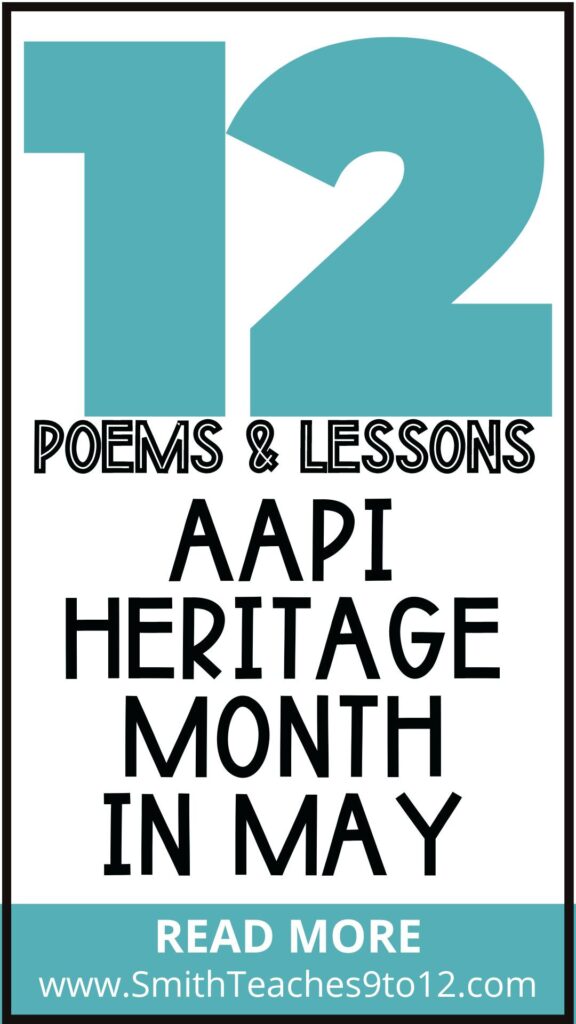
I love poetry and I’m always looking for any excuse to include more of it in my classes. To that end, I put together this free e-book as a guide to activities to do with poetry as well as 5 suggested poems for every month of the year. You can sign up for your copy below!

Related articles
- Adding Color to Your (Winter) Classroom Using Poetry
- Poetry Creation and Risk Taking in ELA
- 3 Ideas for Poetry Creation in Everyday ELA Lessons
- 9 Meaningful Poetry Activities for Women’s History Month
_____________

